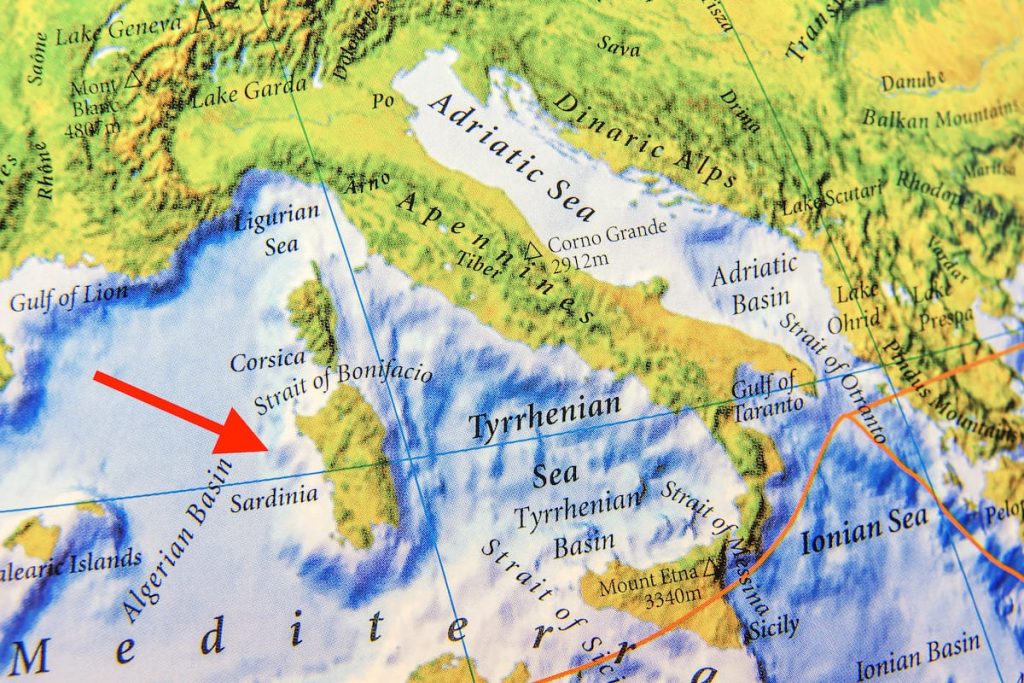
Sardinia (Sardegna in Italian) is an island located in the Mediterranean Sea to the west and south and the Tyrrhenian Sea to the east.
It is the second-largest island in the Mediterranean after Sicily and is politically part of Italy. It is situated 200 kilometers west of the Italian peninsula, 12 kilometers south of Corsica (a French island), and about 200 kilometers north of Tunisia (a country in North Africa). The island is an autonomous region of Italy with a distinct culture, language (Sardinian), and government.
Sardinia is located in the Central European Time (CET) zone during standard time and the Central European Summer Time (CEST) zone during daylight saving time. This means that Sardinia follows the same time as cities such as Rome, Paris, Berlin, and Madrid.
Sardinia’s Location Seen from Space
To get a broader sense of where Sardinia is located on a map of the world, watch this short video provided by the European Space Agency (ESA.) The footage was captured during a Copernicus Sentinel-2 mission.
Is Sardinia Part of Italy?
Yes, Sardinia is part of Italy!
It is an autonomous region of Italy which means it has a special status within the Italian Republic and enjoys a certain degree of administrative and legislative autonomy. The autonomy of Sardinia is recognized and protected by the Italian Constitution. The region has its own government, known as the Regional Council of Sardinia (Giunta Regionale), and has the power to make decisions on various matters, such as agriculture, tourism, transportation, and cultural heritage, within the framework of national legislation. Sardinia gained autonomy within the framework of the Italian Republic with the approval of the “Special Statute of Sardinia” in 1948. The Special Statute was subsequently revised and updated in 1963 and 2003, further enhancing the autonomy of the region.
What is the Capital of Sardinia?
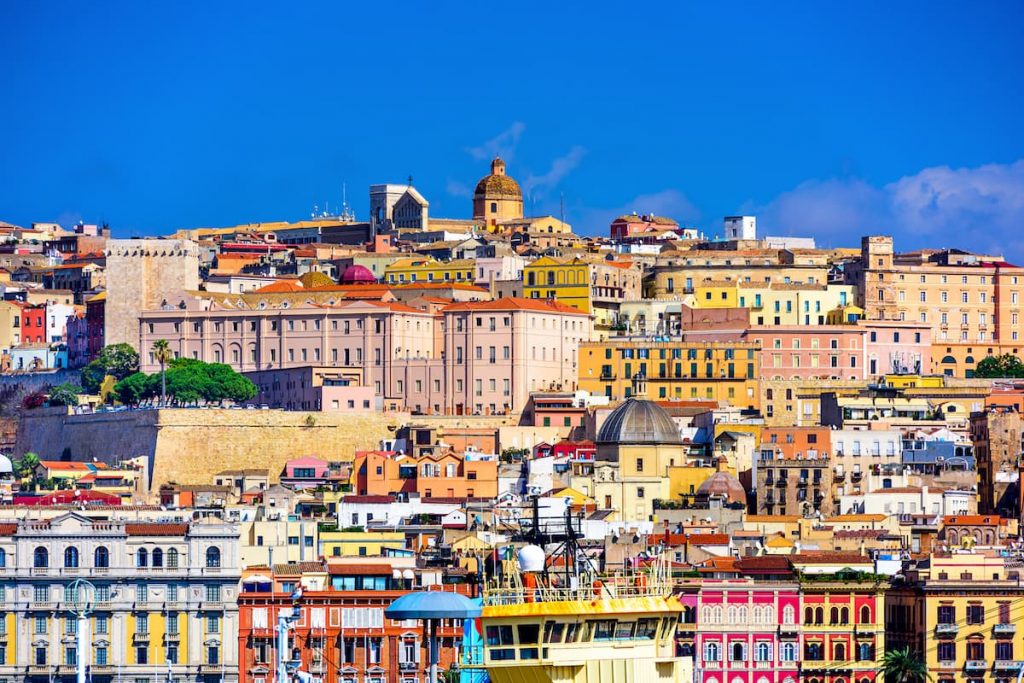
The capital city of Sardinia is Cagliari. Cagliari is located on the island’s southern coast and serves as the administrative, cultural, and economic hub of Sardinia. It is also the largest city on the island, with approximately 155,000 people. Cagliari boasts a rich history, with influences from various civilizations, including the Phoenicians, Romans, and Spanish. The city offers a mix of ancient architecture, modern amenities, beautiful beaches, and a vibrant cultural scene.
Where is the Costa Smeralda?
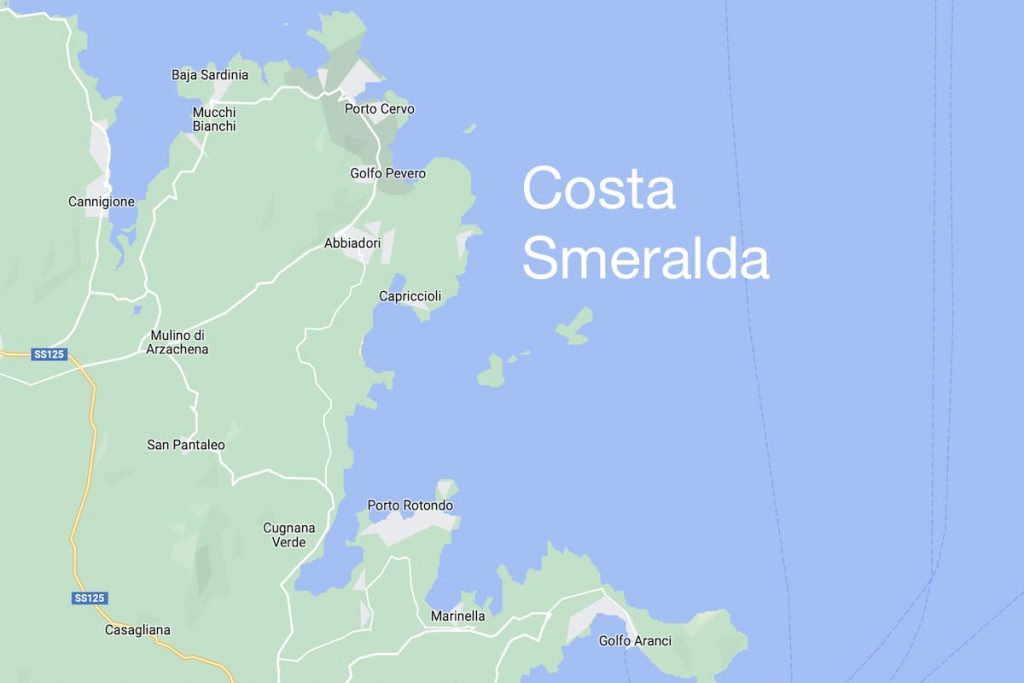
If you’ve heard about Sardinia, you’ve probably heard about the Costa Smeralda (the Emerald Coast.) The Costa Smeralda is a region located on the northeastern coast, near Olbia Airport. It is best known for its stunning coastline, crystal-clear waters, and upscale luxury hotels and resorts. The Costa Smeralda stretches for about 55 kilometers (34 miles), encompassing several towns and villages such as Porto Cervo, Porto Rotondo, and Cala di Volpe. The area is a popular destination for tourists seeking beautiful beaches, luxurious places to stay, and vibrant shopping and nightlife venues.
Geography
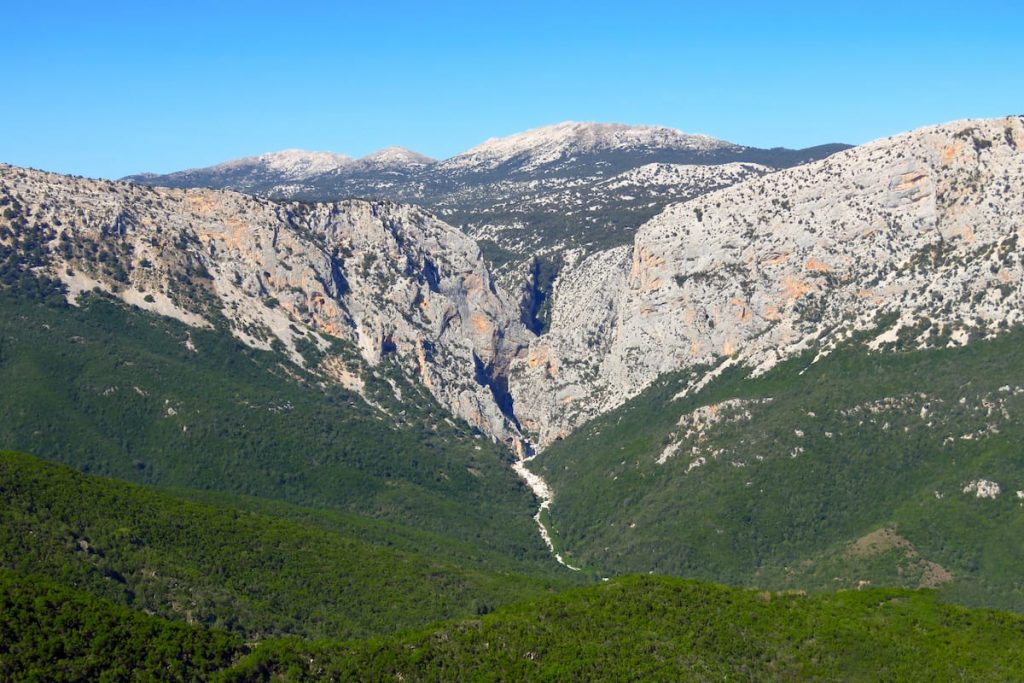
Sardinia features a surprisingly diverse and captivating geography!
Coastline
Sardinia has a long coastline that stretches for approximately 1,849 kilometers (1,149 miles). The island is renowned for its stunning beaches, crystal-clear waters, and picturesque coves. The coastline is varied, ranging from sandy beaches to rugged cliffs, with numerous bays and promontories. Some famous beaches include Spiaggia La Pelosa in Stintino, Cala Luna on the east coast, and Spiaggia del Principe on the Costa Smeralda (Emerald Coast.)
Mountains
The island’s interior is dominated by mountainous terrain. The highest peak is Punta La Marmora (Perdas Carpìas), reaching 1,834 meters (6,017 feet) above sea level in the Gennargentu mountain range. Other notable mountain ranges include the Supramonte and the Monte Limbara.
Plateaus and Plains
Sardinia features several plateaus and plains, primarily located in the central and southern parts of the island. The Campidano plain is the largest lowland area, extending from the Gulf of Oristano to the Gulf of Cagliari. It is an important agricultural region known for its cultivation of wheat, vineyards, and olive groves.
Lakes
Sardinia has a few notable inland lakes. The largest is Lake Omodeo, an artificial reservoir created by a dam on the Tirso River. It is not only a water source but also a popular area for outdoor activities such as boating and fishing.
Caves
Sardinia is renowned for its extensive network of caves, some of which are open to the public. The Grotta di Nettuno (Neptune’s Grotto) near Alghero and the Grotta di Ispinigoli in Dorgali are among the most famous ones, boasting impressive stalactite and stalagmite formations.
Islands
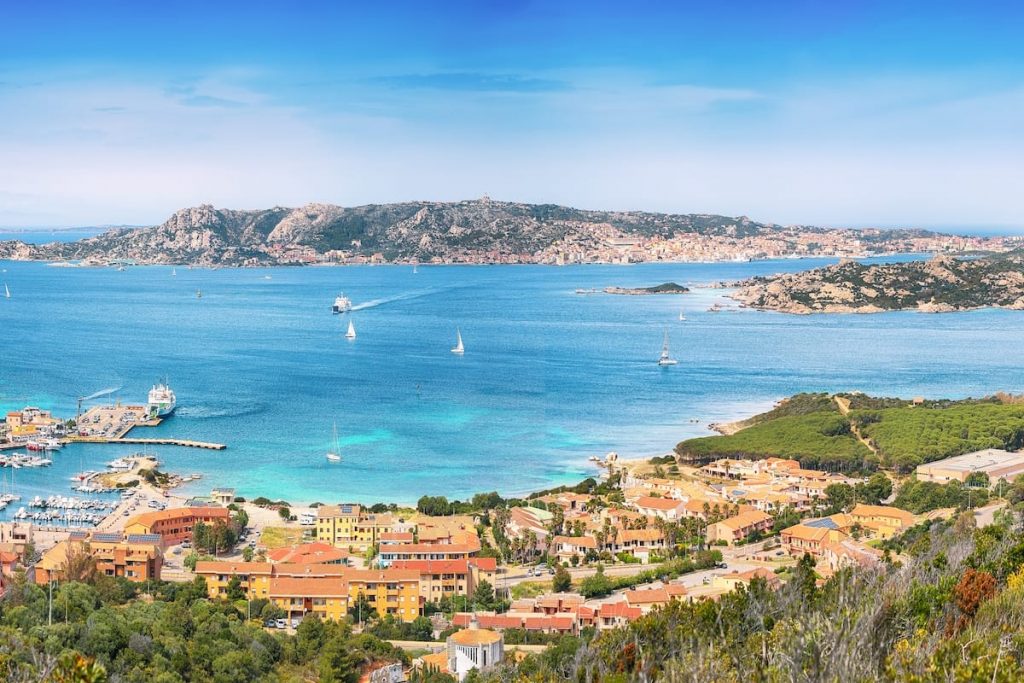
Surrounding Sardinia, there are several smaller islands that add to the region’s charm. Notably, the archipelago of La Maddalena in the northeast is a protected national park and a paradise for boating and snorkeling enthusiasts.
Flora and Fauna
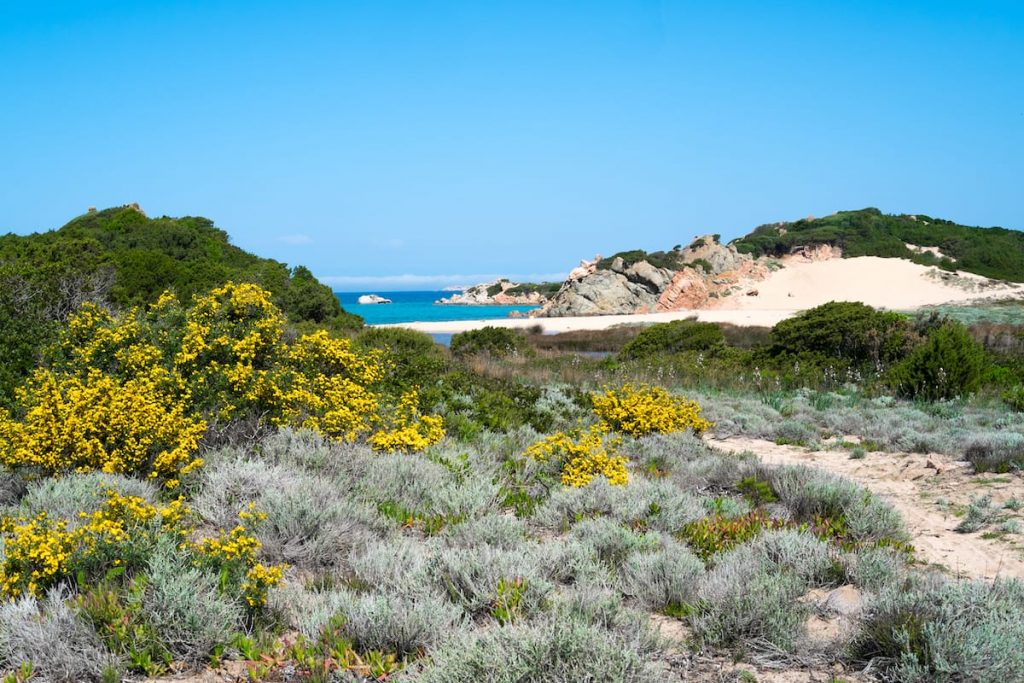
Sardinia is known for its rich biodiversity. The island features diverse flora, including Mediterranean shrubs, cork oak forests, and maquis vegetation. Wildlife includes several endemic species, such as the Sardinian deer, white albino donkeys, mouflon (a wild sheep), the Sardinian fox, and flamingos.
Weather & Climate
Sardinia has a Mediterranean climate. The climate is generally characterized by mild, wet winters and hot, dry summers.
Summers in Sardinia are typically hot and dry, with average temperatures ranging from 25°C to 30°C (77°F to 86°F). In some areas, temperatures can occasionally exceed 35°C (95°F). It’s a popular time for beach tourism, with warm sea temperatures and plenty of sunshine. Spring and Autumn offer milder temperatures compared to summer. Spring brings blooming flowers and pleasant weather, while autumn has warmer sea temperatures and can still be enjoyable for outdoor activities.
Winters in Sardinia are relatively mild, with average temperatures ranging from 10°C to 15°C (50°F to 59°F). However, colder temperatures and occasional rainfall can occur during this season. Snowfall is rare and usually limited to higher altitudes in the mountainous areas. Sardinia experiences most of its rainfall during the cooler months, particularly from November to February. The amount of rainfall varies across the island, with the coastal areas receiving less precipitation compared to the mountainous regions in the interior.